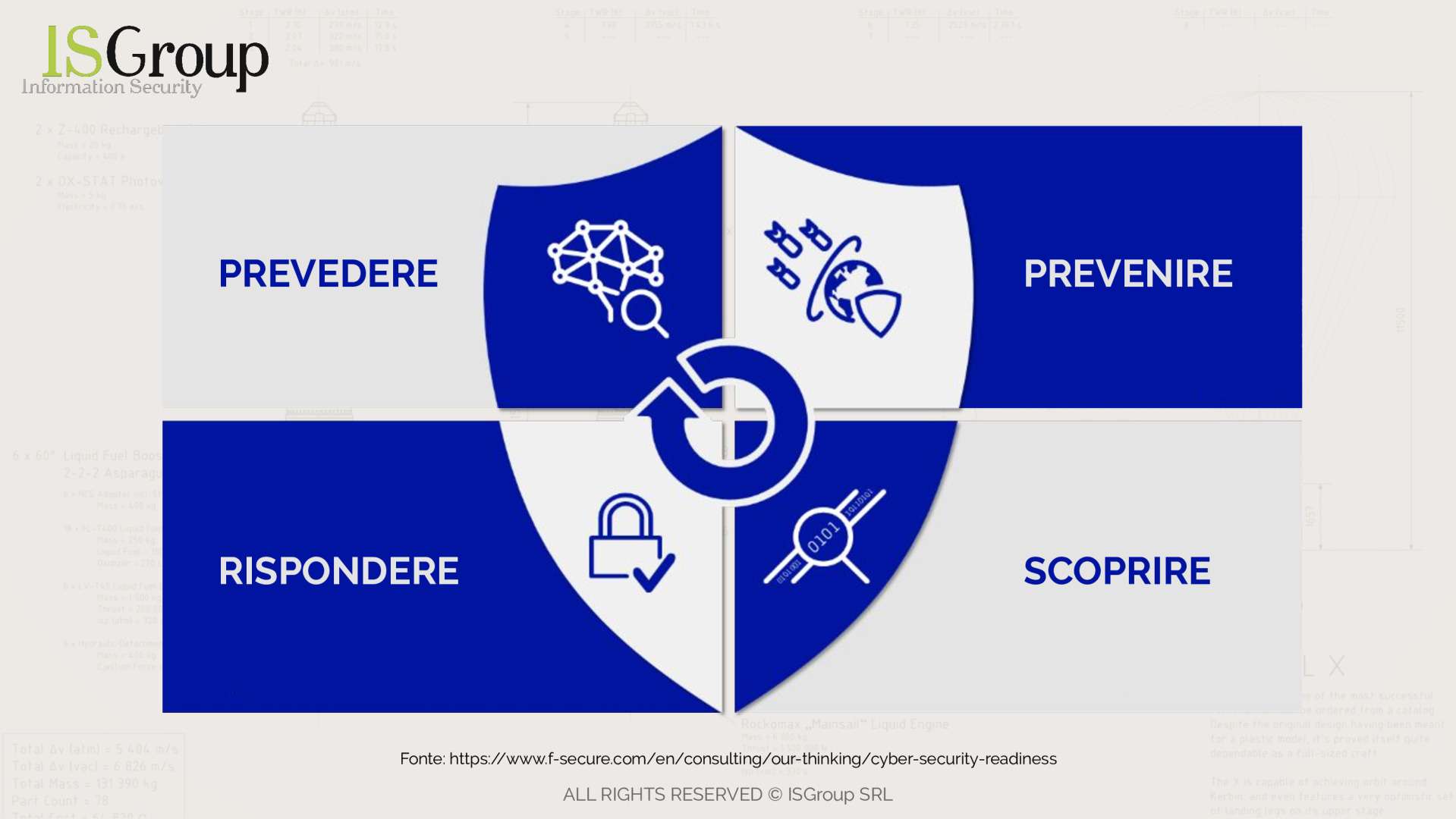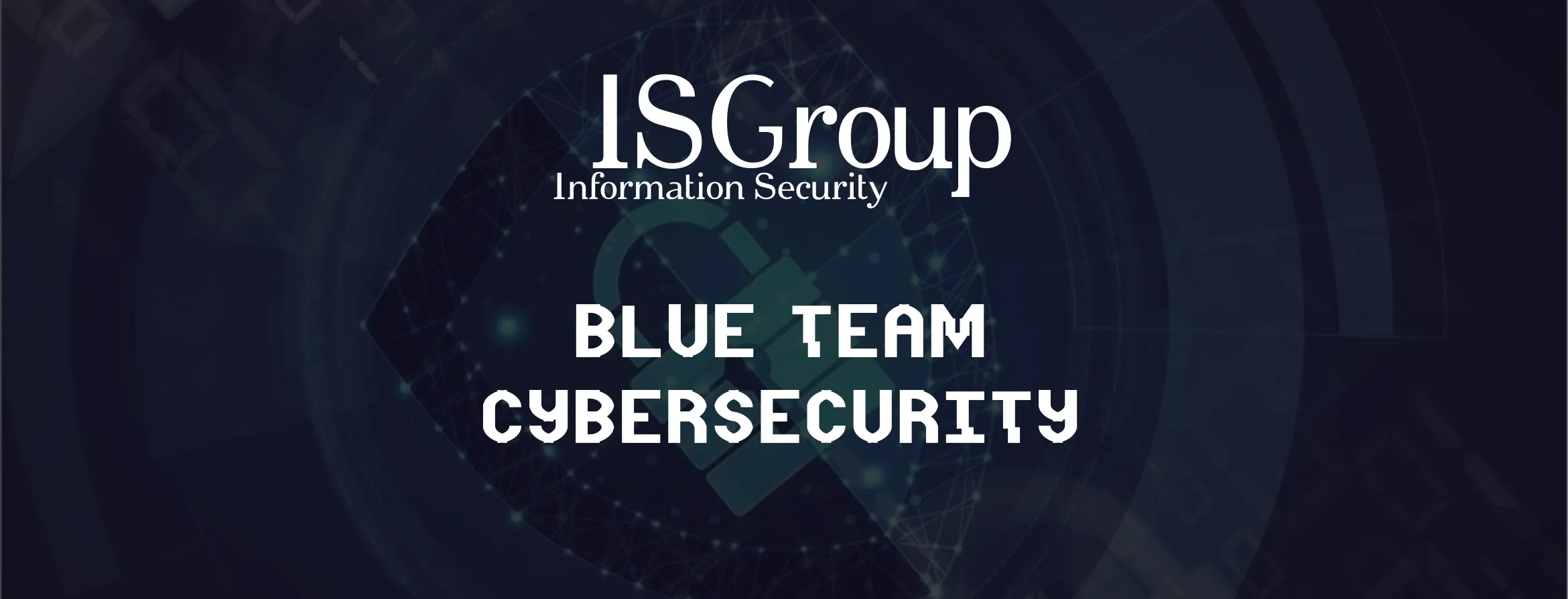Online security is as important as physical security. In this article, we will discuss the Blue Team: What is it? What does it do? Why is it so important for the protection of companies and their cybersecurity?
In recent decades, the digital world has experienced a real boom. The internet provides unparalleled visibility, but it also exposes us to cyber risks.
In this editorial, we will delve into the aspects of the Blue Team in cybersecurity:
What exactly is the Blue Team?

“Blue team” can be translated into Italian as “squadra blu”. It is a true task force:
-
permanently allocated;
-
with defined roles and responsibilities;
-
following predetermined procedures, called “playbooks”;
-
composed of highly specialized personnel in cybersecurity.
The Blue Team's task is to protect the company:
-
identifying cyber attacks and incidents;
-
responding appropriately to limit their impact;
-
ending such attacks;
-
preventing attackers from maintaining access to systems and applications;
-
cleaning up compromised systems.
Additionally, the Blue Team analyzes breaches and applies corrective measures to prevent that particular attack from recurring.
Blue Team vs Red Team
The term Blue Team is of military origin and was coined during World War I by the United States Army. It was opposed to the “Red Team”, or the red team.
Still in the military context, what is the best way to test the adequacy of defense systems? Undoubtedly, it is to simulate real attacks aimed at identifying the weakest points of the defense system itself.
This delicate task is performed by the Red Team, which, in simple terms, must put itself in the enemy's shoes and try to attack the target in every conceivable way.
The Blue Team was created in opposition to the Red Team: its task is to counter the simulated attacks of the Red Team, in order to protect the sensitive target and, if necessary, implement and improve defense systems that have weaknesses.
Red Team: how it can attack
To best test cybersecurity and sensitive information systems, the Red Team has carte blanche. In other words, it must carry out all those attacks that could be carried out by the most skilled and malicious hackers.
Learn more about the offensive activities of the Red Team.
The strategies it adopts can be multiple:
-
Conduct remote attacks via the Internet;
-
Implement various social engineering strategies;
-
Breach physical security systems like surveillance, automated door locks, windows, or safes.
-
Any other action aimed at illicitly obtaining data or sensitive information.
The Blue Team and defense strategies
Conversely, the Blue Team's task is to defend the target from all attacks carried out by the Red Team and real attackers. Summarizing schematically, we could say that its main tasks consist of:
-
identifying the types of attacks and intrusions carried out by the Red Team;
-
blocking these attacks before they have harmful effects on the computer system to be protected;
-
managing two-factor authentication;
-
activating and managing network or system runbooks;
-
improving all security standards;
-
monitoring access to sensitive data;
-
training internal personnel responsible for cybersecurity.
Blue Team vs Purple Team
In addition to the Red Team and the Blue Team, there is also the “Purple Team”. What is it? What are its tasks?
Instead of having two distinct and independent teams, which might not communicate adequately to achieve the final goal of improving the company's resilience to cyber attacks, a third team, the purple one, is interposed.
This team, also composed of industry experts, supports the Red Team in its attacks and suggests defensive strategies to the Blue Team. Its role is to facilitate and observe the activities of the two teams.
Another interpretation of the Purple Team is that it can replace the Red and Blue Teams, optimizing costs. Hiring completely independent Red and Blue Teams involves a significant expense.
Blue Team, Red Team, and Purple Team: the human factor
The members of these teams possess the same technical skills as the most skilled and malicious hackers. However, these skills are used “for good” and not for morally reprehensible purposes, which are often also against the law.
In the IT field, these technicians are called “White Hat”, a sort of “good hackers”. Although they are perfectly capable of performing the most complex operations, they do not exploit a system's vulnerabilities but, on the contrary, provide the owner with all the means to protect it from “Black Hat”, or “bad hackers”.
Unlike the latter, the White Hats that make up the various Red, Purple, and Blue Teams not only offer their services to clients who want to test and/or implement their cybersecurity systems but also engage in training.
Certifications to be part of the Blue Team
Given that White Hats are first and foremost passionate about their work, being a member of the Blue Team, rather than the Red Team, is not a game. Therefore, to work in this field, it is necessary to have training that can be recognized through official certifications.
One of the bodies responsible for issuing such certifications is the International Council of Electronic Commerce Consultants, abbreviated as “EC-Council”. This body was founded in 2003, is based in Albuquerque, New Mexico (U.S.A.), and is recognized worldwide.
Over the years, it has certified more than 220,000 experts, including the famous Edward Snowden, who came to prominence a few years ago for his shocking revelations about cyber espionage.
Certified Ethical Hacker (C | EH)
EC-Council Certified Security Analyst (ECSA)
Among the main certifications issued by this body are the “Certified Ethical Hacker” (C | EH) and the “EC-Council Certified Security Analyst” (ECSA). What exactly do they consist of?
As previously mentioned, these are two certifications necessary to work at the highest levels of cybersecurity and are the “pass” to become members of the Red Teams, rather than the Blue Teams, and consequently, also the Purple Teams.
The first certification, the “Certified Ethical Hacker” (C | EH), is issued at the end of a course focused on the main techniques of ethical hacking, which is the field to which White Hats belong. Some, due to personal inclinations, are more inclined to attack (Red Team), while others prefer to focus on defense (Blue Team).
The secret of White Hats: continuous training
The second, the “EC-Council Certified Security Analyst” (ECSA), is issued to those who want to pursue continuous training over time, in order to enhance the skills acquired in the course that provides the certification analyzed in the previous paragraph.
Indeed, hacking techniques, whatever they may be, are constantly evolving, and the only way to possess all the necessary skills is to continue learning.
In other words, the “EC-Council Certified Security Analyst” (ECSA) is the certification that, in combination with the first, allows you to work effectively within the Blue Team and the Red Team.
Conclusions
As we have seen, the work of the Blue Team, in synergy with that of the Red Team, is essential to test the cybersecurity level of any computer system. Black Hats, or “bad hackers”, never stop improving their techniques and skills.
The only way to confront them and neutralize their attacks is to subject the computer system to tests conducted by people who have the same skills but choose to use them for noble and legal purposes.
The certifications we previously analyzed serve as a true reference point for all of cybersecurity. Relying on professionals who possess these certifications is the only truly intelligent move that allows you to effectively protect your computer systems.
References:
The Blue Team in cybersecurity
https://en.wikipedia.org/wiki/Blue_team_(computer_security)
What is the Purple Team
https://purplesec.us/red-team-vs-blue-team-cyber-security/
Certifications



